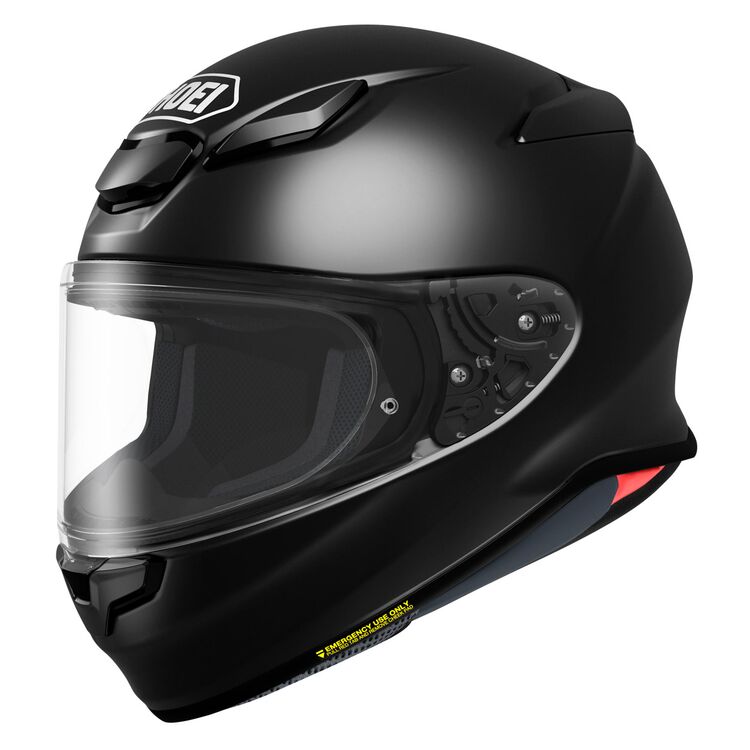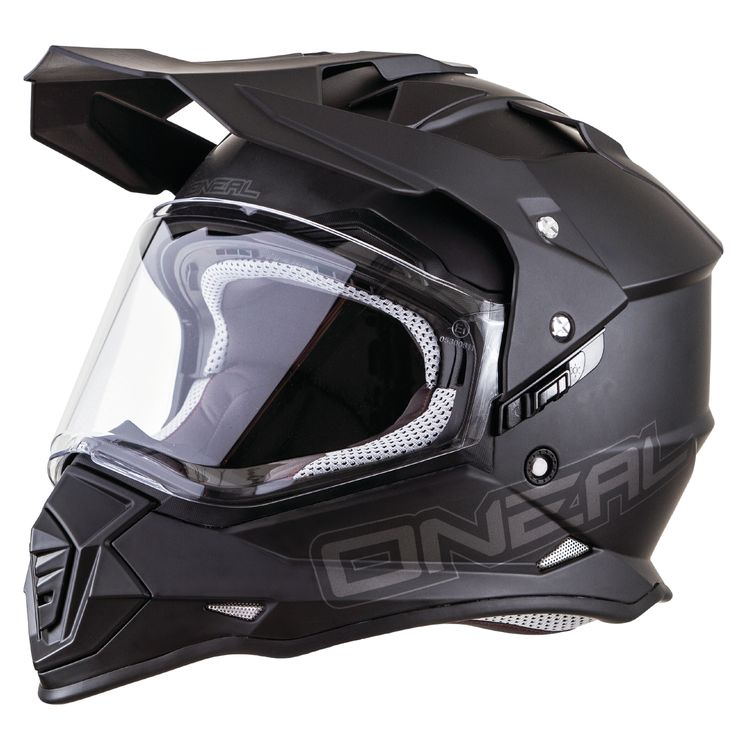Motorcycle helmets are a necessity while riding through tough terrains, murky mountains or even smooth roads but not because they are impact protective (that’s naturally a given!) Helmets also shield the rider’s eyes from harmful UV rays, flying road debris as well as keep you connected with friends on the go.
Now imagine a motorcycle helmet that has all the above features but weighs heavy and causes strain on your head? You wouldn’t even pick it up!
Thankfully, there are now helmets that are lightweight, feel like air on speed rides and offer the same level of impact protection as the other protective shells on the market.
In this guide, we’ve reviewed the six best lightweight motorcycle helmets available, along with their pros and cons and a buying guide that covers all the tips you must know before you purchase one.
The Lightest Motorcycle Helmets
Though it may sound tempting to pick out a helmet with the lightest possible weight, most companies will compromise on safety standards to achieve that number, which is why we have laid down the following expert-recommended products to help you be safe, secure and steered clear of unsafe motorcycle helmets.
1. SHOEI RF 1400 Full Face Motorcycle Helmet
Premium Choice – Reduces Noise Levels
The SHOEI RF 1400 full face motorcycle helmet is constructed for motorists that need a noise-cancelling, well-ventilated and airtight helmet.
The shell of the helmet is built with EPS foam which blankets wind noise and the sides of the helmet have vortex generators installed which reduce wind turbulence to a minimum.
Also, the helmet is made waterproof using airtight, exclusive window beading, protecting riders from storms and rain.

Our Take:
In a $500 price tag, the SHOEI RF 1400 provides the best aerodynamics. It serves as a great sport touring helmet.
2. Arai XD4 Motorcycle Helmet
Our Top Pick – Most Comfortable
With a shell composed of fiberglass composite, the ARAI XD4 full face helmet is durable, lightweight and offers premium functions for the hefty price tag.
Catering to intermediate and round oval head shapes, the helmet adds to the comfort of the rider using lighter liners with efficient cheek pads for good fitting and plenty of intake and exhaust vents to prevent heat exhaustion.
The full face helmet comes with a peak which can be lowered or removed to use with goggles, to improve aerodynamics or for a better field of vision.
Also, the inner padding can be customized to size for a better fitting helmet, especially helpful for riders that need to add a Bluetooth system or wear goggles.

Our Take:
The ARAI XD4 full face motorcycle helmet ticks all the boxes for motorists looking for a high quality, well-fitting and attractive helmet.
3. ScorpionEXO ST1400 Carbon Helmet
Durable Choice – Most Lightweight
Weighing only 1380 grams or 3 pounds, the ScorpionEXO ST1400 helmet is one of the lightest helmets made yet and the award goes to its carbon fibre shell construction.
The durable carbon fiber helmet comes with a layer of EPS foam liner with large cheek pads to improve the fitting of the helmet and reduce noise levels.
Also, the interior is composed of a Kwikwick III liner which keeps the motorists sweat-free in warm weather and offers comfort when the wind gets chilly.

Our Take:
The ScorpionEXO ST1400 Carbon full face helmet covers all the bases for motorists to feel comfortable, look great and be safe on the road.
4. BELL SRT Modular Helmet
Editor’s Choice – Best Field Of Vision
Constructed in a fiberglass composite shell, the BELL SRT modular motorcycle helmet is expensive but distributes weight well on the rider’s head and looks classy.
The interior is layered with EPS foam, well-ventilated and even has recessed EPS speaker pockets which allows the rider to listen to music, podcasts or chat with friends on the go.
All of this in a modular helmet is a steal, it offers the freedom to choose between being fully protected in a full face helmet or riding freely with the wind in an open face helmet.

Our Take:
The BELL SRT modular motorcycle helmet, though expensive, is convenient, versatile, lightweight and durable. The chin strap buckle allows riders to easily remove the chin bar or the helmet, even with gloves and the removable, washable interior allows motorists to ride clean and safe on mountains and hills.
5. Sedici Strada II Carbon Full Face Helmet
Vintage Choice – Most Convenient
The Sedici Strada II full face motorcycle helmet is constructed in a 6k carbon fiber shell, offering excellent safety and impact protection in a durable, high quality and lightweight helmet.
The ventilation on the helmet is also exceptional, with two high flow chin vents, dual intake crown vents and three rear exhaust vents, this helmet works wonders in warm and tropical climates.
The face shield adjusts 360 degrees, the soft padded liner adds to the comfort while the padded chin strap with D-ring closure allows riders to operate the helmet with gloves on and off.

Our Take:
The Sedici Strada II motorcycle helmet unifies convenience with retro looks to give motorists the best experience on the road.
6. O’Neal Men’s Sierra II Full Face Helmet
Value Choice – Most Impact Protective
With an ABS shell construction, the O’Neal Sierra II full face helmet is durable and protects against sudden impacts or falls. It is lightweight too, measuring only 1590 grams.
For improved comfort, the Sierra II helmet has a moisture wicking, removable and washable liner integrated and plenty of intake and exhaust vents for optimal aerodynamics.
It also features comm pockets to fit in Bluetooth headsets.

Our Take:
The O’Neal Men’s Sierra II full face helmet is a total steal for the affordable price tag.
What To Consider Before Buying A Motorcycle Helmet
Picking up the nicest looking helmet that feels lightweight may seem like an easy way out, however, it might just lead you to an incomplete purchase where most of your needs for a helmet remain unmet.
So, let’s go through all that you need to consider to pick out the right helmet:
Certification
Most helmets, if not all, are certified by authority organisations like DOT in the USA, ECE in Europe or SNELL internationally. Through a battery of tests, they examine the impact protection of the helmet and if it is approved, the DOT/ECE helmet can legally be worn outside.
Type of Helmet
Generally, there are three types of motorcycle headgear’s available and each helmet offers different levels of impact protection and is made to suit different types of riders.
The safest type of motorcycle helmet, a full face helmet comes with a chin bar which helps protect the head and neck of the rider. Also, it is versatile and can be chosen for daily wear, adventure rides or even street racing.
Also known as retro style helmets, an open face helmet does not include a chin bar which allows riders to have a better field of vision and improved aerodynamics. These are best for riding in the city.
A blend of open face and full face motorbike helmets, modular shells are a modern invention and their best feature is the removable chin bar which allows riders the freedom to choose whether they want to ride with an open face or a full face helmet. These helmets are best for long distance riders.
Safety
For a motorcycle helmet to work effectively, it must fit the rider as if it was made just for them. It must be snug enough to pull in the cheeks a little but not so tight that it causes a strain on the head.
A foolproof way is to check whether you can chew gum, the helmet is over-sized if you can and if you can’t even place it in the mouth, it is too tight.
How To Choose The Perfect Motorcycle Helmet
Since motorbike helmets are at least a 5-year investment to extend your lifespan, it is crucial to consider all the basic features and then two more to choose the perfect motorcycle helmet for you.
So, whether you are an experienced motorist, a beginner biker or even a street racer, here are a handful of things that pave a foolproof path to getting the right helmet:
Define the Usage
Before picking out a helmet, note down where the helmet will be used, it will help you streamline the kind of features you need to prioritize and the style of helmet that will work best for you.
If you need a motorcycle helmet for street racing or adventure riding, make sure it is SNELL approved, has adequate ventilation available and is dust, wind and waterproof. Off road or dual sport helmets will work best in this case.
If you’re riding solo as a hobbyist, biking to work to avoid traffic or planning to go on an adventure, pick out a helmet that is comfortable, controls noise levels well and offers a wide field of view. Modular helmets are the perfect choice for these riders.
If you’ve joined a coaching class, booked a ride up the mountains with friends or have a race scheduled with a fellow motorist, choose a helmet that is Bluetooth-compatible, has good networking range and can accommodate installations. Also, these shells may run one size bigger to adjust the different devices.
Some helmets like dual sport helmets and dirt bike helmets are also made to be used in certain settings i.e. customized for specific riders.
Highlight the Desired Features
There is a surplus of motorbike helmets available today, each constructed to cater to a wide variety of audience. Knowing what specifications to look for in a helmet can help you narrow down your choices and pick the right one in no time.
When it comes to the shell of the helmet, it is the most important element of impact protection. Mostly, helmets are constructed in either fiberglass, polycarbonate or carbon fiber blended with a layer of EPS foam inside.
- Helmets constructed in polycarbonate and thermoplastic resin are most commonly found, inexpensive and durable.
- Fiberglass helmets are colorful, expensive but do not hold well against high temperatures.
- If you’re looking for a lightweight and durable helmet, carbon fibre helmets are your best pick but they can be expensive.
Every motorist needs a lightweight helmet and generally, one can weigh up to 1800 g and more if it’s a modular shell; but it actually depends on how well the weight is distributed on the head as well as the helmet’s position.
If it fits right, the helmet will not cause neck pain or headaches.
For the best experience, look for helmets that are wind, water and dust-proof, come with an internal visor that shields the eyes from harmful UV rays, is compatible with Bluetooth for group rides and has MIPS technology incorporated.
Measure Your Helmet Size
For a helmet to fit well on the head, it is important for you to know your head shape first. Most motorbike helmets cater to an intermediate oval head as it is most commonly found in individuals.
If you have a round oval head shape, you may need to size up on the helmet to adjust the sides of the face. For a long oval head shape, look for helmets that have a removable chin bar to adjust the bottom of the face.
Now that you’ve understood what head shapes are available, it is time to measure your head size to purchase the correct size of helmet. Here’s what you need to do:
- Take out a measuring tape and wrap it around the highest point of your head, generally above the ears.
- Compare with a standard US and EU size chart and you have your measurements.
- Don’t forget to look at the manufacturer’s given size chart and reviews of customers, you may need to size up or down in some helmets.
- If you’re buying the helmet online, make sure it has a return/exchange policy to cater to wrong size or incorrect fitting.
Frequently Asked Questions
What is the safest type of helmet?
Full face helmets are unanimously considered as the safest type of motorcycle helmets because not only do they protect the rider’s head from sudden impacts, but they keep the neck stabilized as well which protects the spine from injuries and improves posture too. According to a study, full face helmets lower the risk of facial injury by two-thirds!
Are lightweight helmets safe to wear on adventure rides?
Yes, lightweight helmets are now manufactured with tons of impact protective features including better shell materials, improved lining and padding which allows motorcyclists to go on adventures and speed without getting a strain. Also, don’t forget to look for the DOT, ECE or SNELL approval for added safety on the road.
Are more expensive helmets safer?
Generally speaking, yes, the extra cost will get you a safer motorcycle helmet (most important for adventure motorcyclists) but it doesn’t have to cost a fortune. You can get a shell that protects all risk points on the head, has great impact protection and fits well, for $80 – $100.
What is a good weight for a motorcycle helmet?
Helmet weights can vary according to size. Full face shell sizes have an average weight between 1500 – 1700 metric tonnes. When helmet weight increases by about 165 grams it becomes harder to conceal.
How much does the average motorcycle helmet weight?
The typical large full face helmet is approximately 3-1/2 pounds to 3-1/2 pounds. Some helmets have lighter weights but they don’t mean the headgear is better or worse. Modular helmets tend to weigh more but it is balanced by removing the chin bar. Also, greater shell sizes pack in more weight.
Final Thoughts
Motorcycle helmets have been designed in all kinds of shapes, sizes and styles to cater to a diverse market but weight is one feature where riders unite and say lightweight shells are the way to go.
However, it can be quite difficult to find a motorcycle helmet that is lightweight and offers the same level of impact protection as a heavyweight helmet.
With comprehensive product lists and buying guides like these, riders (especially beginners!), can finally zero in on a lightweight motorcycle helmet that fits their needs and compliments their style. Also, it takes the guesswork out of their heads!

Ryan Thompson is a 35-year-old sport bike enthusiast known for his adventurous spirit. With years of weekend rides and exploring new roads, Ryan brings fresh insights and firsthand experience to ProtectiveGearz. His energetic approach and passion for the latest gear make him a trusted source for riders seeking up-to-date advice.



